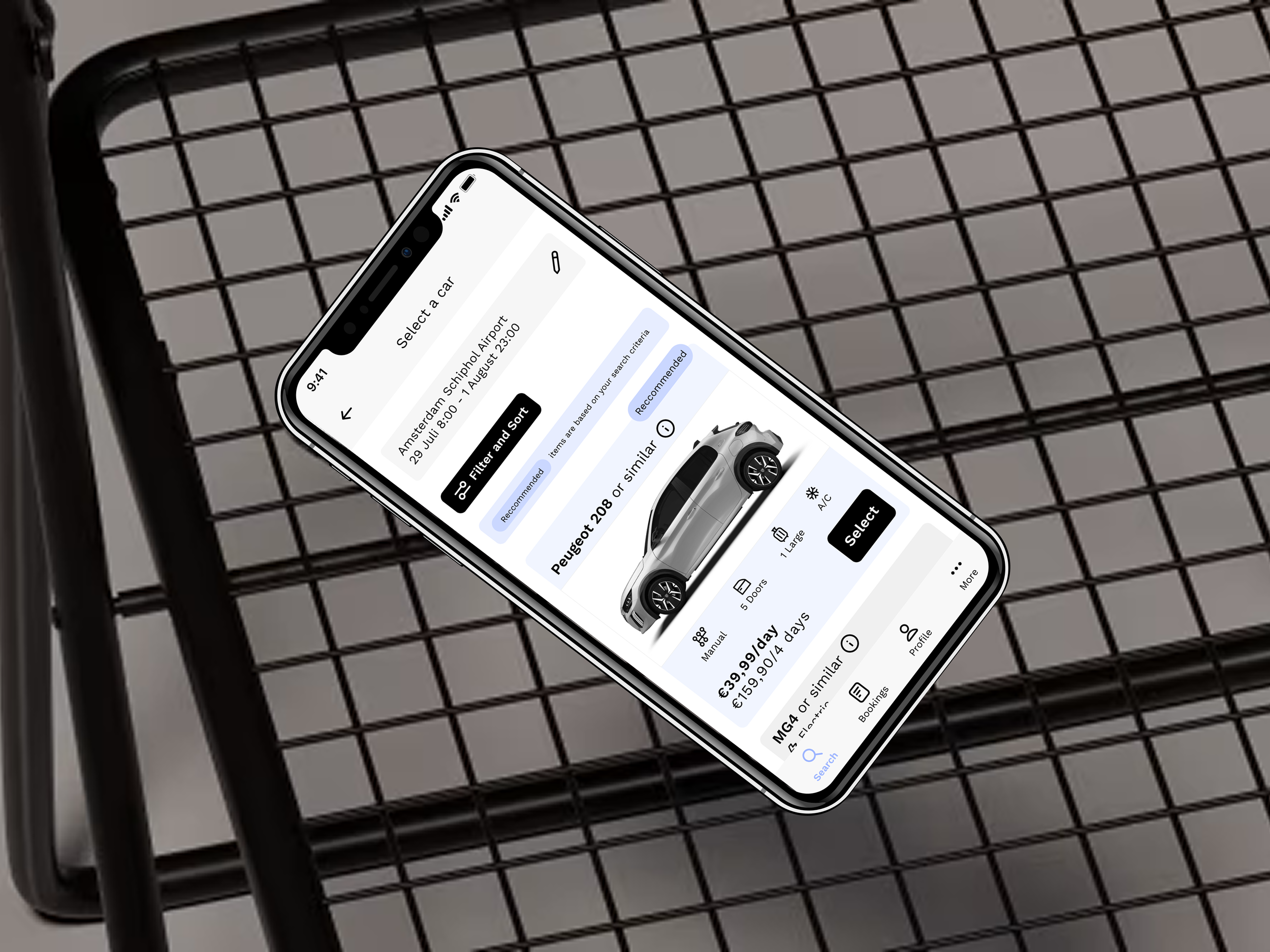The Via Nova mobile app
Role: Led end-to-end design, including research, journey definition, interaction design and, interface execution.
Remote
2024-2025
Via Nova is a next-generation mobility service designed for clarity, speed and control. It offers a streamlined digital rental experience built on transparency, intelligent guidance and user confidence.
Project overview.
This case study explores the design of a car rental mobile app experience (Via Nova), informed by user research, competitor analysis, and usability testing, with a focus on clarity, confidence, and decision-making.
The objective was to identify friction points within the current booking journey and create a solution that improves clarity, reduces decision fatigue, and builds trust throughout the process.
Problem statement.
How might we create a car rental booking experience that reduces uncertainty, simplifies decision-making and strengthens user confidence?
Research & insights.
User research focused on how people currently book rental cars and where breakdowns in understanding or confidence occur. This included competitor benchmarking, heuristic evaluation, and usability testing.
Key insights surfaced:
Vehicle overload - long result lists caused hesitation and uncertainty.
Filters and navigation - controls were difficult to apply, adjust or reset.
Unclear terminology - industry language created cognitive friction.
Age requirements - users did not understand why age affected eligibility or pricing.
Insurance opacity - uncertainty around what was covered led to mistrust.
Mileage guesswork - users struggled to estimate their needs in advance.
Start screen success - a simple, search-first entry point consistently supported flow.
Design goals.
Enable easier comparison during vehicle selection.
Provide intuitive and transparent filter controls.
Use plain language instead of technical jargon.
Clarify why key information is required (such as age).
Make insurance coverage and extras transparent.
Reduce mileage complexity by offering a standard package with optional upgrades.
Build trust through reassurance and clear guidance.
Design process.
Competitor Benchmarking: Identified opportunity spaces and usability gaps.
Heuristic Evaluation: Measured clarity, feedback, and error prevention.
Usability Testing: Observed behaviour and validated recurring issues.
Customer Journey Mapping: Pinpointed moments of friction and uncertainty.
Information Architecture: Simplified and restructured the flow.
Affinity Mapping: Clustered findings to define priorities.
Wireframing: Explored structure and navigation through early concepts.
High-Fidelity Prototype: Developed a refined flow in Figma.
Icon Design: Created custom icons to improve clarity in the Extras menu.
Tools: Pen and paper (sketch exploration) + Figma (wireframes, IA, and prototype)
Outcome.
The redesigned experience reduces cognitive load and uncertainty while improving wayfinding, comparison, and transparency.
Users move through the flow with clearer expectations, greater control, and a stronger sense of trust.
Next steps + future iterations.
Further research could be expanded with surveys to validate patterns at scale and support additional segmentation. Future testing on the high-fidelity prototype would help measure whether the improvements translate into increased confidence and faster decision-making.
Additional refinement around accessibility standards would ensure a more inclusive booking experience.




